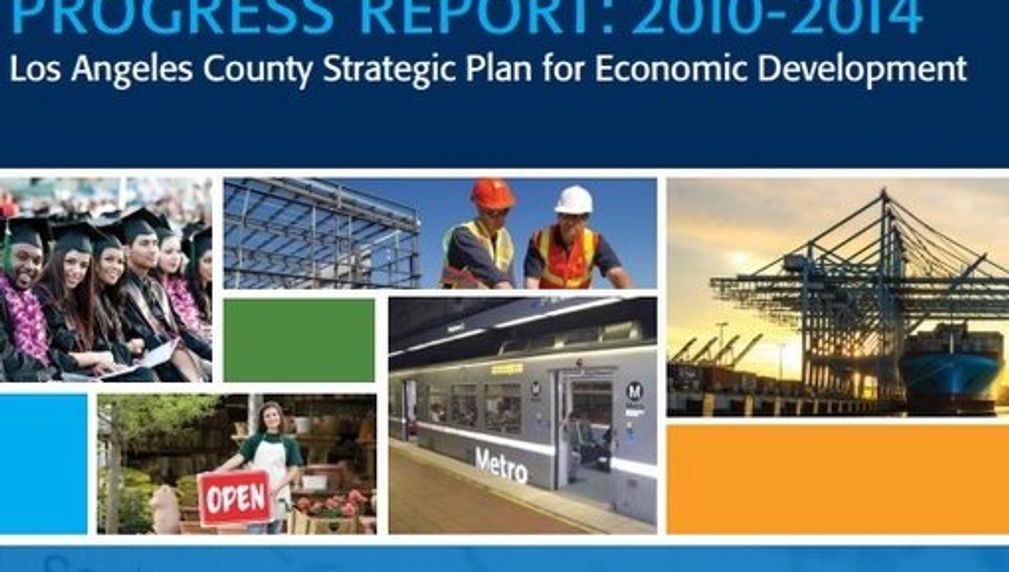Implementing LA County’s Strategic Plan for Economic Development: 2016-2020
LAEDC proposes to leverage its past success in leading collaborative economic development efforts to ramp up the 2016-2020 Strategic Plan’s implementation program around seven aspirational goals: 1. Invest in Human Capital 2. Strengthen Leading Traded Industries 3. Catalyze Innovation Capacities 4. Fix Infrastructure Development, Financing and Delivery Processes 5. Create a More Business Friendly Environment 6. Increase Global Connectedness 7. Build More Livable Communities

In what areas of Los Angeles will you be directly working?
Central LA
East LA
San Gabriel Valley
San Fernando Valley
South LA
Westside
South Bay
Antelope Valley
all other sub-regions and communities of LA County
How do you plan to use these resources to make change?
Conduct research
Engage residents and stakeholders
Implement a pilot or new project
Mobilize for systems change
Advocate with policymakers and leaders
Implement and track policy
Engender Civic Stewardship
How will your proposal improve the following CREATE metrics?
Employment in the creative industries
Arts establishments per capita
Concentration of manufacturing activity in LA
Patents per capital
Jobs per capita
Minority- and women-owned firms
Gini coefficient
Number of high growth startups
Venture capital investment
Measures of cultural and global economic influence (“soft power”) (Dream Metric)
Recruiting and retention rates for local higher education institutions (Dream Metric)
Percentage of graduates from local higher education institutions that remain in LA County 5 years after graduating (Dream Metric)
Unemployment rates (and opportunities) for the formerly incarcerated (Dream Metric)
Describe in greater detail how you will make LA the best place to CREATE.
LA has all the attributes necessary for economic success in this globally connected, innovation-intensive 21st Century. But LA’s regional economy is transitioning at an accelerated pace away from low-tech production towards an Information-Age economy characterized by innovation-oriented industries, where even manufacturing is becoming less labor-intensive, and more technology-driven. This transition presents us with a new set and scale of challenges that require us, as a region, to “fill in” the gaps by making smarter investments in early and lifelong education and retraining; by developing forward looking infrastructure systems and physical spaces; by inspiring a new generation of civic and social stewards; and by strengthening our innovation capacities and global connectedness. Once implemented, LA’s next Strategic Plan for Economic Development will interlink the region’s economic, physical and networking assets, and fill in the gaps in a way that unconditionally bridges us to the Information Age.
Please explain how you will evaluate your work.
At the end of the implementation program, we expect to have increased standards of living for all the residents of Los Angeles by making progress on the following:
1. Increased employment rates
2. Concentration of manufacturing, Foreign Direct Investment in Los Angeles
3. Increased Equity, Equality, and Prosperity for LA County residents
4. Attraction of more high growth start-ups and Increased Venture capital investment
5. Cultivation of cultural and global economic “soft power”
6. Increased Human Capital and Strategic Workforce Development through training, educational attainment, and Community Development
How can the LA2050 community and other stakeholders help your proposal succeed
Money (financial capital)
Volunteers/staff (human capital)
Publicity/awareness (social capital)
Infrastructure (building/space/vehicles, etc.)
Education/training
Technical infrastructure (computers, etc.)
Community outreach
Network/relationship support